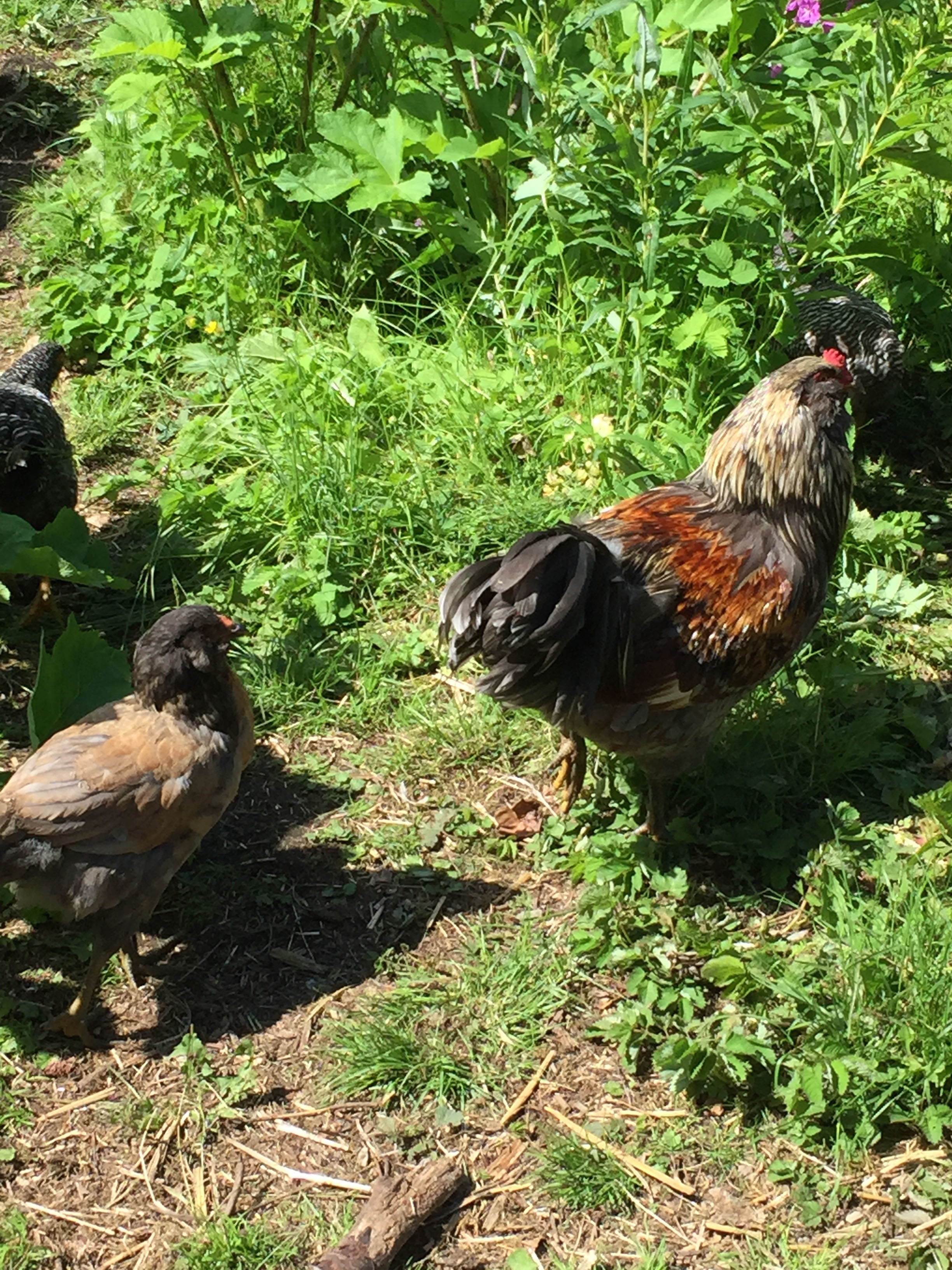Shawn and Ember Jackinsky’s garden looks almost like every other northern garden. There are currants, chickens, gooseberries, carrots and kale, all protected from the vanguards of the moose by a tall fence.
But a short interview with the brother and sister duo will tell you that this garden is unique. The two have spent the last 15 years developing strains of edibles designed specifically for Alaska’s climate, and the results are a unique take on sustainability.
Located about four miles north of Ninilchik village, the land the Jackinskys currently are cultivating is steeped in both Alaska and their own family traditions. The Jackinsky family has owned the property since before Alaska was purchased by the United States in 1867. Although the original homestead is now parceled out, Ember and Shawn are farming land that has lain fallow for 20 years, but has been within their family for generations.
This aura of family and cultural tradition is partly what fuels Shawn’s passion for growing and developing crops that have historically done very well in Alaska’s challenging climate.
“I’m very excited to focus on old world plants. Luckily for us, a lot of the traditional information was stored, and we’re adding to that dialogue as we go,” says Shawn.
Walking into one of Ember and Shawn’s gardens, tall stalks of fireweed, pushki and willow are hard to miss growing along the edges and in-between the beds. Some modern gardeners would make an effort to keep these plants out, but not the Jackinskys; they welcome them with open arms.
“There was an enormous amount of cultivation before the Russians came to Alaska,” explains Shawn as he checks on the leaves of some fireweed. “But it just didn’t look like what we might call a traditional garden today.” Ember concurs, saying, “The idea of what a garden is or isn’t, is only informed by recent history.”
For this reason, the Jackinskys are incorporating plants like pushki and fireweed into their own food system rather than weeding them out.
“It’s not that we don’t weed our garden,” says Shawn, “It’s that we’re questioning what a weed is. Fireweed is a resource plant. We use it to break up the soil, we harvest it for tea. I could never think of it as a weed, it’s a resource plant.”
With feasible sustainability as their goal, the Jackinskys have made a special effort to focus on perennial plants that come back year after year for their main staples.
“If there’s a plant that multiplies itself, can handle the Alaskan climate and keeps coming up, we know it’s a reliable food for this area,” Shawn says excitedly around a mouthful of edible willow leaves. “Our lovage is up before anything else in the spring, and will go until November. You just can’t get that with an annual celery that takes a lot of time to grow, and lovage has that celery taste but twice as strong.”
That’s where the real passion and inspiration behind the Jackinsky’s efforts lie: breeding vegetables that can take the toughest weather Alaska can throw at them and still come back every year, providing food security to all that live in the far north.
The Jackinskys have spent almost 15 painstaking years breeding, cross-breeding and selecting their plants in an effort to cultivate the most Alaskan hardy strains.
“We’re focusing on really cold tolerant plants that can take the freezing temperatures. We have a strain of potatoes developed near Lake Titicaca that can take -10 degrees Fahrenheit without turning to mush,” says Shawn.
Ember was unable to find satisfactory seeds for the northern tier, and was inspired to start breeding and saving seeds of her own.
“I remember my grandfather dusting away the snow and showing me kale underneath,” recounts Ember. “It can be done.”
So far, she has acclimated 134 different crops to Alaska. They don’t require watering and they can survive extreme winter temperatures.
A self-taught geneticist, Ember sources plants from around the world to begin breeding them for Alaska. Much of her work starts with a generic hybrid plant that she sources from the southern states within the United States. She then “reverse breeds” these hybrids into a more heritage form of the plant that can handle the conditions she subjects it to.
Her results are impressive, and she has even managed to grow grapes outside of a high tunnel.
“I have varieties of grapes that can go down to -40 degrees Fahrenheit and survive snow fall,” says Ember. “I can grow cabernet, le marquette, river bank and even table grapes.”
She is hoping her breeding efforts can generate new agricultural industries within Alaska that were previously off limits.
At the root of everything the Jackinskys do is a strong desire to create genuine food security within Alaska, and to grow as sustainably on their land as possible.
“I’ve always felt that the idea of ‘at least do no harm’ should apply to all aspects of life,” says Ember. “What we grow and how we grow it is working in tandem with nature.”


